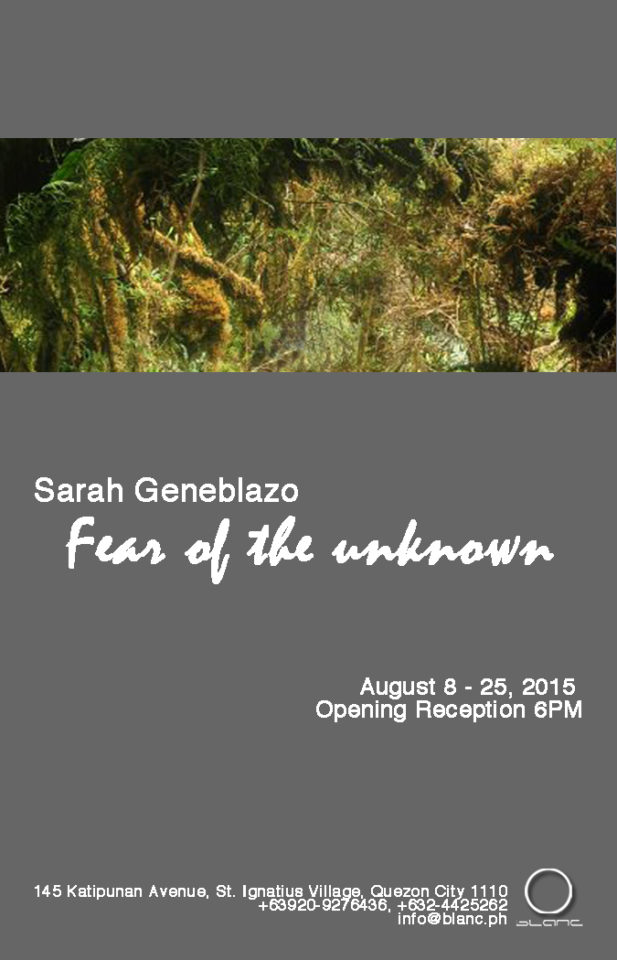
In Fear of the Unknown, Sarah Geneblazo recreates her recurring nightmare of getting lost in a forest. The picture of a young girl trying to find her way through a labyrinthine tangle of trees is as familiar as a bedtime story that begins “Once upon a time, …”
Geneblazo herself is Little Red Riding Hood. Clad in a chaste nightdress, and caught either lying on a velvet green bed of moss or navigating through overwhelming fecundity, the girl in the paintings is small and vulnerable. Knowing Geneblazo’s personal history only heightens the unease and anxiety in her tree-crowded canvases. The wolf, though unseen, is nearby, biding its time, sharpening its claws in the shadows.
“To everybody who has heard fairy tales, the image and feeling of being lost in a deep, dark forest are unforgettable,” writes Bruno Bettelheim in The Uses of Enchantment: The Meaning And Importance of Fairy Tales. The forest is an important symbol in these stories, representing, as Bettelheim enumerates: “the dark, hidden, near-impenetrable world of our unconscious” and
“the place in which inner darkness is confronted and worked through; where uncertainty is resolved about who one is; and where one begins to understand who one wants to be.”
Bettelheim’s analysis hits close to home for Geneblazo, a victim of sexual abuse who uses her art as a means of coping. In the past, she has depicted girls floating through darkness, feminine faces obscured by flowers, as well as empty houses to help her with her trauma. She acknowledges that Fear of the Unknown comes at a critical point in her journey. Her paintings are beautiful nonviolent weapons against terror, confusion, and fear.
In fairy tales, the forest is often the site of conflict. Happy endings depend on whether or not the hero escapes from it unscathed. It is also a proxy for emotional turmoil, as Bettelheim says: “When the hero is confronted by difficult inner problems which seem to defy solution, his psychological state is not described; the fairy story shows him lost in a dense, impenetrable wood, not knowing which way to turn, despairing of finding the way out.”
The therapeutic nature of art is well-documented and Geneblazo, a graduate student of the UP College of Fine Arts and a member of Neo Angono Artists Collective, has always been forthright about the nature of her practice. “My life will be in great danger
if I don’t get out of this path,” she says of the symbolism in Fear of the Unknown. “This nightmare is a self-portrayal of my misery.”
While the exhibition is deeply personal for Geneblazo, the little-girl-lost-in-the-woods is, thanks to coountless stories, a universal trope that is instantly recognizable. Even those who are unaware of Geneblazo’s past will be able to understand and empathize with the image of a lone human being wandering through a suffocatingly verdant maze.
“In fairy tales, being lost in the forest symbolizes not a need to be found, but rather that one must find or discover oneself,” writes Bettelheim. “If we have lost the framework which gave structure to our past life and must now find our way to become ourselves, and have entered this wilderness with an as yet undeveloped personality, when we succeed in finding our way out we shall emerge with a much more highly developed humanity.”
Fear of the Unknown is Geneblazo’s continuing journey through the wilderness and a brave step toward healing.
WORKS
DOCUMENTATION











